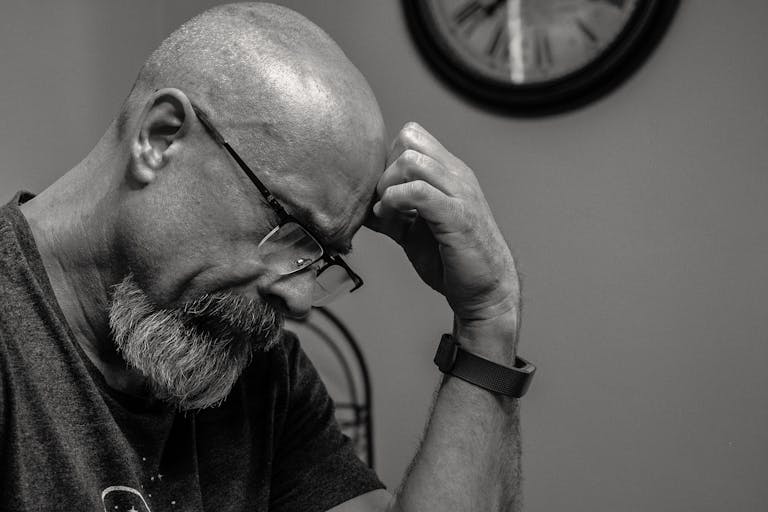TikTok Misinformation Is Warping What Students Think They Know About ADHD
A new study from Syracuse University is putting a spotlight on a serious issue spreading across one of the world’s most popular social platforms — TikTok. Researchers found that misleading videos about ADHD (Attention-Deficit/Hyperactivity Disorder) are changing how young adults think about the condition, often leaving them less informed but more confident about what they believe to be true. The study, published in the journal European Child & Adolescent Psychiatry, reveals how exposure to inaccurate health information can quietly distort understanding and even influence treatment decisions.
What the Study Looked At
The research was led by Ashley Schiros, a Ph.D. candidate in clinical psychology at Syracuse University, alongside psychology professor Kevin Antshel. Their goal was simple but important: find out how college students respond when they encounter ADHD-related TikTok content — both accurate and inaccurate.
The team recruited around 490 Syracuse University students, all aged between 18 and 25, who actively used social media but had never been diagnosed or treated for ADHD. Each participant also reported showing at least two ADHD-like symptoms, such as trouble focusing or forgetfulness, to reflect the kind of self-diagnosis trend now common online.
Participants were divided into three groups:
- Those who watched accurate TikTok-style videos about ADHD.
- Those who viewed misinformation videos.
- A control group who saw neutral, non-ADHD content.
Before and after watching, students completed questionnaires measuring their ADHD knowledge, confidence, stigma, and intentions to seek treatment — both from evidence-based and alternative methods. The videos themselves mimicked real TikToks, complete with slides, voiceovers, and captions, to simulate what users typically see on their feeds.
What the Researchers Found
The results were eye-opening. Students who saw misinformation scored lower on factual ADHD knowledge compared to those who watched accurate content or neutral videos. However, and this is where things got tricky, those same students also reported higher confidence in their understanding of ADHD.
This means that misinformation didn’t just make them wrong — it made them certain they were right.
That’s a dangerous mix. The researchers pointed out that this pattern resembles the Dunning–Kruger effect, where people with less knowledge tend to overestimate how much they know.
Interestingly, both the misinformation and the accurate information groups reported a greater intention to seek treatment compared to the control group. However, the type of content (true or false) didn’t make a major difference in that motivation. In other words, just hearing about ADHD — even through inaccurate sources — made people more likely to want to explore treatment.
One more surprising detail: stigma levels toward ADHD didn’t significantly change across any of the groups. This suggests that misinformation doesn’t necessarily make people more judgmental — but it does make them more confused and confident about that confusion.
The Role of Entertainment and Trust
The researchers also explored how people perceived the TikTok content. Participants rated each video based on its credibility, which included traits like entertainment value, trustworthiness, relatability, and expertise.
Out of all these factors, entertainment turned out to be the most powerful. The more engaging and fun a video seemed, the more it influenced viewers’ knowledge and treatment intentions — regardless of whether it was accurate or not.
That’s not entirely surprising. TikTok’s algorithm favors highly engaging, short-form videos designed to hold attention, not necessarily to inform. When a topic like ADHD is packaged in a relatable, emotional, or funny way, viewers are more likely to internalize the message — even if it’s wrong.
Meanwhile, perceived trustworthiness showed a strange relationship: higher trust sometimes correlated with lower intention to seek treatment. This might mean that people who fully trust what they see online feel they already “know enough” and don’t need professional help — another unintended side effect of misinformation.
Why It Matters
The consequences of this go far beyond TikTok trends. Misinformation about ADHD can lead to self-diagnosis, over-diagnosis, or unwarranted treatment-seeking, as well as misplaced belief in non-evidence-based therapies. For example, someone might start identifying normal distractions or procrastination as signs of ADHD, while others might turn to “natural” remedies or online coaching instead of seeking professional evaluation.
The study also ties into a broader issue: social media’s growing role as a health information hub. Roughly 40% of Americans now use TikTok as a search engine, especially younger audiences. This means millions of people are consuming medical information without any guarantee of accuracy.
Schiros and her team argue that this kind of exposure can reshape public perception of disorders like ADHD. It can blur the line between scientific facts and social media narratives, leading people to trust anecdotal experiences more than clinical expertise.
The Bigger Picture: ADHD and Social Media
ADHD is one of the most discussed mental health conditions online. On TikTok, hashtags like #ADHD have billions of views. While some creators share real experiences that help destigmatize the condition, studies show that over half of popular ADHD-related videos contain misleading or oversimplified information.
Some common examples of misinformation include labeling traits like “people-pleasing,” “ADHD paralysis,” or “chronic overwhelm” as diagnostic symptoms — even though they’re not recognized by clinical guidelines. This can make ADHD appear much broader and vaguer than it really is, making self-diagnosis seem easy and common.
It’s worth remembering that true ADHD involves persistent patterns of inattention and/or hyperactivity that significantly interfere with daily functioning — not just occasional forgetfulness or procrastination. Diagnosis should be based on professional assessment, not internet checklists.
Fighting Back Against Misinformation
Schiros suggests that tackling ADHD misinformation requires system-level solutions, not just individual awareness. Universities, medical institutions, and public health agencies can launch social media campaigns that “prebunk” (prepare people to recognize myths) and “debunk” (correct existing ones).
At the same time, helping creators themselves produce accurate and engaging content could make a big difference. Offering resources, training, or even incentives to those who share evidence-based information might help balance the flood of misleading posts.
The researchers also plan to follow up with a real-world study to see how people’s regular TikTok use affects their ADHD knowledge and treatment behavior. They hope this next phase will help identify strategies to protect users from misinformation while still keeping digital education accessible.
What You Can Do as a Viewer
If you come across ADHD content on TikTok or other platforms, ask yourself:
- Who is posting this? Are they a licensed mental health professional or just a content creator?
- Can I verify this elsewhere? Check official sources like the CDC, NHS, or the American Psychiatric Association.
- Is it too relatable or too broad? Real ADHD symptoms are specific and impairing, not just quirky or trendy.
Critical thinking is the best defense against misinformation. Social media can be a great way to learn, but only if we approach it with healthy skepticism and a willingness to cross-check what we see.






